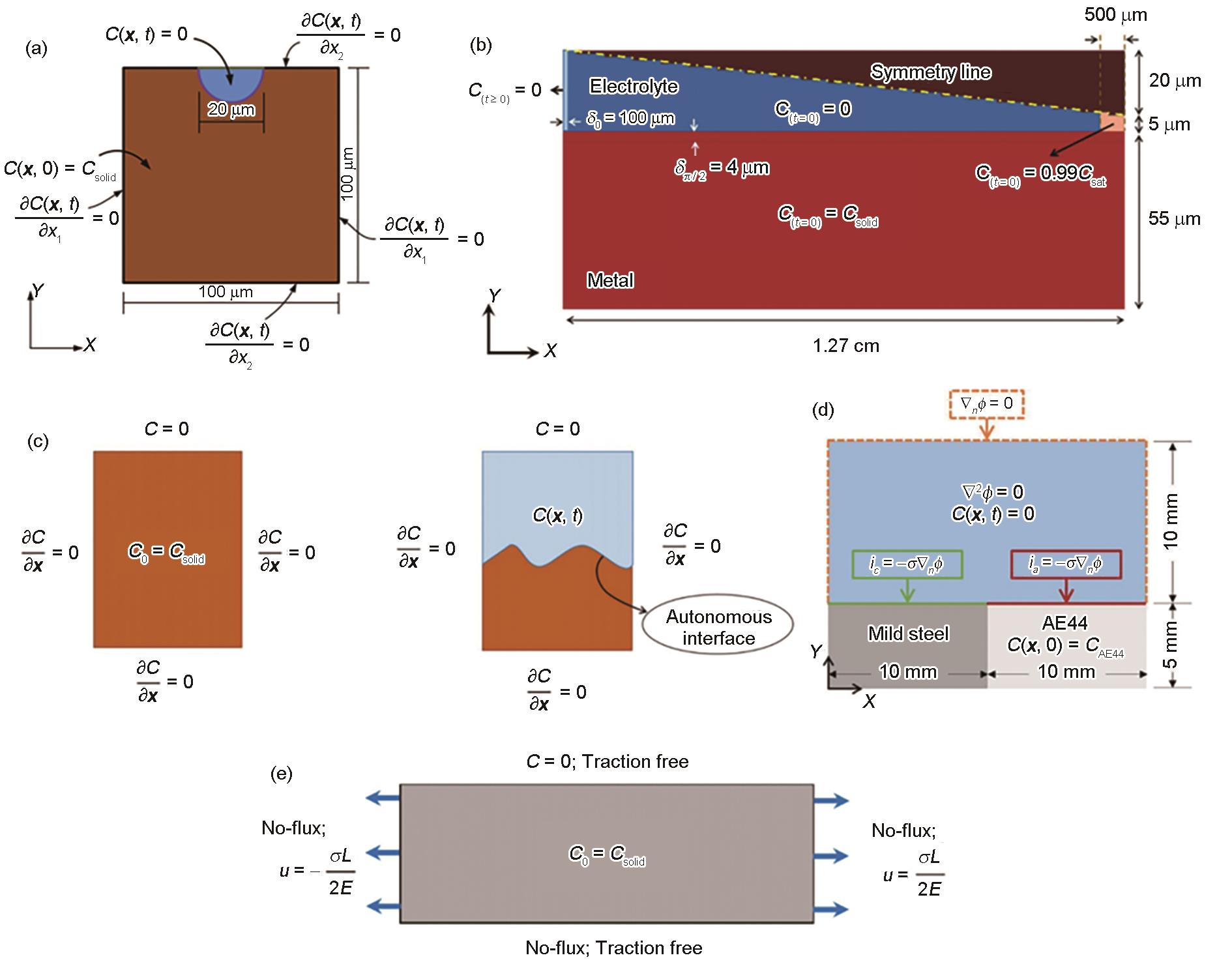Fig.6 Initial and boundary conditions of 2D in PD of pitting corrosion (a)[60], crevice corrosion (b)[70], intergranular corrosion (c)[72], galvanic corrosion (d)[73], and stress corrosion cracking (e)[74] (X, Y—coordinates; C( x, 0)—concentration of material point x at t = 0; Csolid—concentration of solid node; and —derivative of concentration; C( x, 0) = Csolid, C( x, t) = 0, , and = 0—there is no flux around the boundary of the metal, except over the solid/liquid interface. δ0—subscripts are the values for the polar angle θ of the crevice; C(t ≥ 0) = 0—boundary concentration to the bulk dilute electrolyte; C(t = 0) = 0—concentration of electrolyte; C(t = 0) = Csolid—concentration of metal; C(t = 0) = 0.99Csat—concentration of the end of crevice. —derivative of concentration; C0 = Csolid—concentration of intact metal; C( x, t)—concentration of material point x. ϕ—second derivative of potential; ϕ = ϕ·n —potential gradient, n is normal vector; ic—cathode current density; ia—anodic current densities. u—displacement with tensile stress, σ—tensile stress, L—length of the domain, E—elastic modulus)
|

